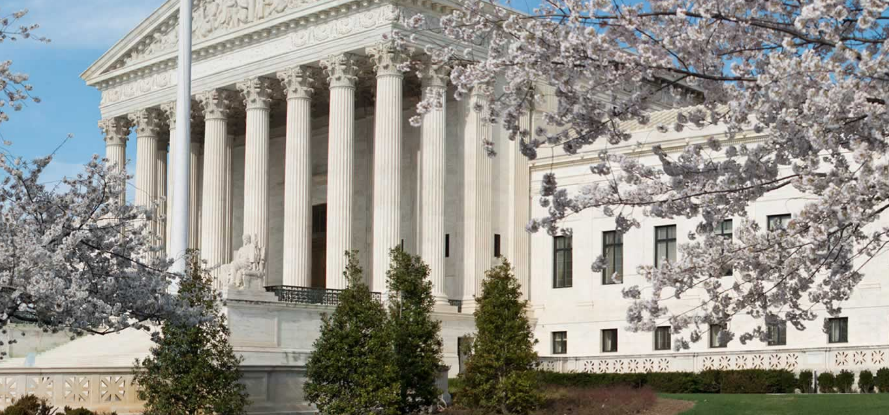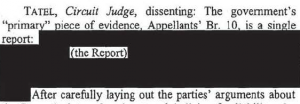The Supreme Court Has Already Agreed that the Mystery Appellant Caused a “Direct Effect” in the United States
I’d like to make a minor — but I think important — point about the DC Circuit opinion in the Mystery Appellant challenge to what is believed to be a Robert Mueller subpoena. Assuming that this is a challenge to a Special Counsel subpoena, then the Supreme Court has already agreed with Mueller — in dissolving a stay of financial penalties for blowing off a subpoena — that some company owned by a foreign country took an action outside the US that had an effect inside the US, in an investigation into what happened during an election.
This post will assume that this is a Mueller subpoena. Some of the evidence backing that assumption includes:
- DC District Chief Judge Beryl Howell issued the original order; she presides over Mueller’s grand jury
- A lawyer asked for Mueller’s latest sealed filing on the day a response from the Mystery Appellant was due
- Greg Katsas recused from consideration of this case; he had said he would recuse on Mueller related issues
- The secrecy for the hearing before the DC Circuit, and arguably the review process for this challenge, were exceptional
- Mueller lawyers Michael Dreeben and Zainab Ahmad were seen returning to his office after the DC Circuit hearing
Judges David Tatel, Thomas Griffith, and Stephen Williams issued their order on December 18. The Mystery Appellant appealed to the Supreme Court, and over Christmas John Roberts took briefing on that appeal. Last week the Supreme Court declined to uphold the stay, effectively agreeing with the Circuit’s decision.
And that’s important, because a key part of the now-public (though still partly sealed) DC Circuit opinion explains how the presumed Mueller request overcomes the sovereign immunity of the company in question. The request must involve — among other things — an exception to sovereign immunity.
Taking section 1604 ‘s grant of immunity as a given, the government must check three boxes for the contempt order to stand. First, there must be a valid grant of subject-matter jurisdiction. Second, one of the Act’s exceptions to immunity must apply. And third, the contempt sanctions must be a permissible remedy. According to the district court, the government satisfies all three. We agree.
Mueller claimed that this qualified as an exception because the request involves an “act outside the territory of the United States in connection with a commercial activity of the foreign state elsewhere [when] that act causes a direct effect in the United States.”
Moving to those exceptions, in its ex parte filing the government steers us to the third clause of section 1605(a)(2). That provision denies immunity in an “action … based … upon an act outside the territory of the United States in connection with a commercial activity of the foreign state elsewhere [when] that act causes a direct effect in the United States.” Ordinarily, the Corporation would bear the burden to establish that the exception does not apply. See EIG Energy FundXIV, L.P. v. Petroleo Brasileiro, S.A., 894 F.3d 339, 344- 45 (D.C. Cir. 2018) (“[T]he foreign-state defendant bears the burden of establishing the affirmative defense of immunity,” including “‘proving that the plaintiff’s allegations do not bring its case within a statutory exception to immunity.”‘ (quoting Phoenix Consulting Inc. v. Republic of Angola, 216 F .3d 36, 40 (D.C. Cir. 2000))).
And because Mueller relied on an ex parte filing to make that case, all the judges involved — Howell, Tatel, Griffith, Williams, Roberts, and whoever else at SCOTUS reviewed this — relied on the argument that Mueller’s lawyers laid out about the request.
Here, however, the government relies primarily on ex parte evidence unavailable to the Corporation. We have repeatedly approved the use of such information when “necessary to ensure the secrecy of ongoing grand jury proceedings,” In re Sealed Case No. 98-3077, 151 F.3d 1059, 1075 (D.C. Cir. 1998), and we do so again here. But where the government uses ex parte evidence, we think the burden falls on the government to establish that the exception applies, and we will conduct a searching inquiry of the government’s evidence and legal theories as a substitute for the adversarial process.
In a sealed discussion of Mueller’s ex parte filing, the DC Circuit finds a “reasonable probability” that that section covers this subpoena. It goes further and states that it doesn’t have to decide what the gravamen of the subpoena is, which suggests that something about this request makes it very clear that the company both possess the records and that they are relevant to Mueller’s investigation.
The “gravamen” of a subpoena may be the mere fact that an entity possesses the documents in question. Alternatively, the “gravamen” may be related to the content of the records and why they may be relevant to the government’s investigation. Indeed, the correct approach may well vary with the facts of a given case. Here, however, we need not resolve that issue [redacted]
There’s some other redacted discussion that dismisses a claim made by the corporation that will be interesting for the history books. But the DC Circuit is clear that the request — as laid out in an ex parte filing presumably written by Mueller’s lawyers — clears the subject matter question.
None of this analysis tells us enough about the company for us to guess what foreign company it is. The WaPo says it is a financial institution. I happen to think that Qatar or the Emirates’ investment authority are the most likely candidates but that’s just an educated guess.
Still, if this is indeed a Mueller subpoena, given the topic of Mueller’s inquiry and his fairly clear discipline at staying within the scope of it, that nevertheless is a signifiant revelation. That’s because Mueller is investigating events relating to an election. And most acts by a company owned by a foreign country that cause an effect in this country — if they have some relationship with that election — would be illegal. It could be the payoff for a bribe. It could be a more direct expenditure associated with the campaign. It could be a payment associated with activities that occurred during the campaign.
Maybe it’s something far more obscure. But any of the obvious applications here would all implicate a foreign country influencing — directly or indirectly — the election. And SCOTUS has already reviewed that Mueller argument, and found it reasonable.
That doesn’t mean SCOTUS has reviewed the evidence the company has, it doesn’t mean the company will turn over the evidence (though it would already incurred something like $300,000 to avoid compliance), it doesn’t mean the evidence proves whatever crime Mueller has cited in demanding it.
But SCOTUS has, at a minimum, found Mueller’s argument that such evidence would be relevant to his criminal investigation reasonable.
Update: Added language to make what happened — SCOTUS dissolved the stay — technically correct.
Update: And SCOTUS is now debating whether to allow the Mystery Appellant to file cert under seal or not.
As I disclosed last July, I provided information to the FBI on issues related to the Mueller investigation, so I’m going to include disclosure statements on Mueller investigation posts from here on out. I will include the disclosure whether or not the stuff I shared with the FBI pertains to the subject of the post.





